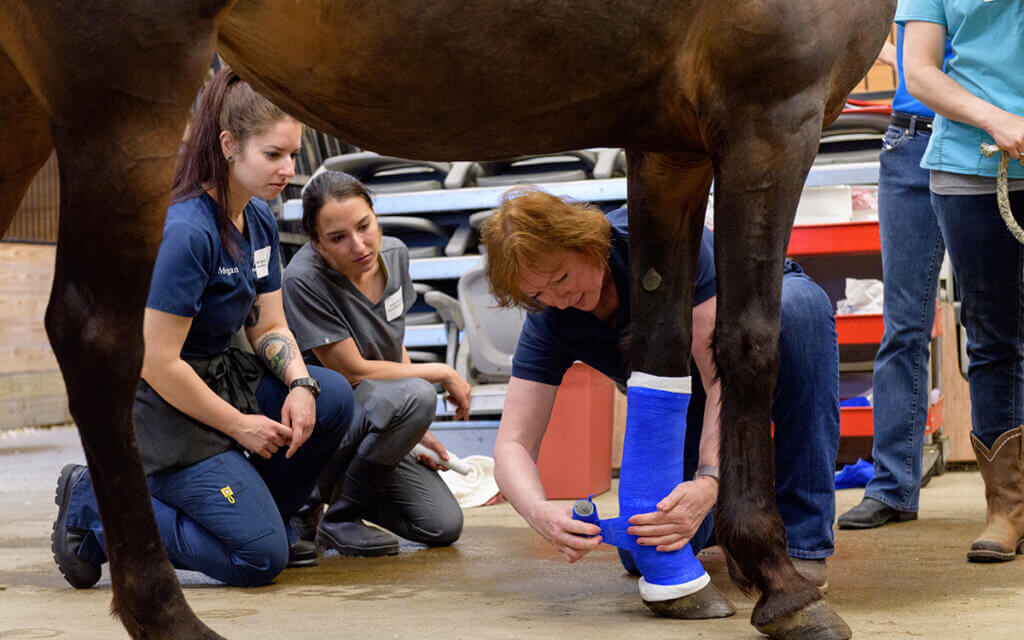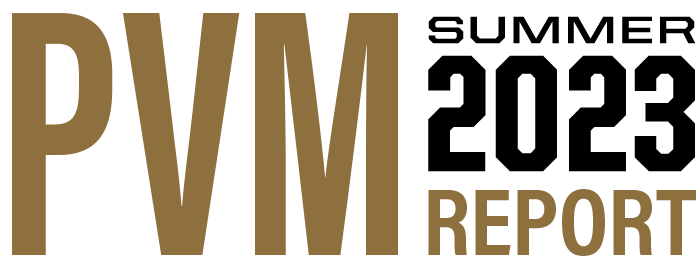
At 20 years old, the Veterinary Nursing Distance Learning (VNDL) program of the Purdue University College of Veterinary Medicine has been around a long time in online education terms, which are something like dog years.
The program was starting to show its age, even as the pandemic experience and the continuing growth and maturation of online learning raised expectations from online students. Purdue Veterinary Medicine leaders also were concerned about student retention levels in the VNDL program, whose courses, taught by faculty and staff members throughout different departments of the college, varied in look and feel.
“We were losing students somewhere in the first or second semester,” said Josh Clark, the VNDL program’s assistant director. “We felt part of that was due to the way our courses were set up. To improve student retention, there was a need to make our courses more uniform.”
As of the fall semester 2022, all VNDL courses and mentorships now are delivered by instructional technologists and veterinarians employed in the college’s Veterinary Nursing program. The college also went looking for a partner to help give the courses a major makeover. The result is a multiyear rejuvenation project with the Course Production team of Purdue Teaching and Learning Technologies (TLT) and Purdue University Online.
“The Purdue Veterinary Nursing Distance Learning team is comprised of highly experienced academic leaders who are already quite gifted in virtual instruction,” said Dr. Chad Brown, director of Veterinary Nursing Programs. “We needed a virtual platform upgrade so they could spread their wings even more.”
Even though it needed modernizing, the VNDL program was growing. There are 217 programs like it nationwide, but only ten are delivered entirely online and Purdue’s tops that list, according to thebestcolleges.org.
Trained veterinary technicians are in high demand and short supply. “Every student who graduates from Purdue’s program has multiple job offers,” Dr. Brown said. Moreover, though the VNDL program’s students have traditionally leaned toward working professionals seeking to become credentialed, Clark said the online program is now drawing learners from among recent high school graduates – now veterans of online learning because of their pandemic experience – who might formerly have come to campus to study. The College of Veterinary Medicine also has developed significant corporate and organizational training partnerships, among them with VetBloom, United Veterinary Care, and Alliance Animal Health.
The demand, and the societal need, prompted both Purdue University Online and the Purdue Provost’s Office to assist with funding for the VNDL makeover. “When students start our program, we want them to like the classes and we want them to stay in the program and finish and graduate,” Clark said. “We want students to be in our courses and think, this is a really good course, I’m learning a lot and I’m able to engage with the instructor and with other students in the class.”
The TLT Course Production team brings a focus on sound instructional design for teaching and learning in the online space to achieve that goal. The instructional designers provide knowledge of best practices and expertise in pedagogy and technology to assist faculty in applying their subject matter expertise and content to realizing their vision for a course. “We’re putting much more emphasis on student engagement,” said Christopher Beck, a senior instructional design manager with TLT and Purdue University Online. “We’re helping them ensure their students not only get the content they need but that they do it in a way that keeps them going, keeps them motivated, keeps them engaged.”
Someone perusing the new courses after experiencing the old version will see a more logical, consistent design and navigational scheme with an aesthetically pleasing modern look. They’ll see a lot more video used more effectively. They’ll see a battery of interactive features. Beck highlighted one exercise where students help the veterinarian diagnose a sick dog (who’s ingested rat poison, it turns out) in what’s almost a “choose your own adventure.”
In addition to their design and project management expertise, the instructional designers are a fount of information on tips and tricks for using Brightspace and on other tools, such as Circuit, a calibrated peer review app Clark is adopting for writing assignments. Likewise, Course Production videographers assist faculty with video producing and editing, on campus or remotely.
The project started in the summer of 2022 and the first five courses were redone in the fall of 2022. By the summer of 2025, faculty and staff members, partnering with the Course Production instructional designers and supported by video production staff, will have revamped all 27 courses, two to five each semester including summers.
“Given the increasing prominence of distance education in the higher education landscape, the makeover of these Veterinary Nursing Distance Learning Program courses is very important to our college, which has a longstanding record of leadership in veterinary nursing education,” said Dr. Willie Reed, dean of the College of Veterinary Medicine. “This upgrade is pivotal as we seek to continue leading the way in expanding quality online education opportunities for students interested in careers in the veterinary nursing profession.”
The process began with Veterinary Nursing instructional technologists and Course Production team members working together to create the infrastructure for what was to come. That included sound curriculum plans with honed, clear, and aligned learning objectives and resources like a syllabus template and an instructor guide that breaks down online best practices instructors should implement in their courses, such as having regular virtual office hours and holding live virtual exam reviews. They also created a standard Brightspace template for the course modules.
“It’s put an added layer of work on the instructors to continue teaching their current course load while also working on a course redesign that can take somewhere between five and 10 hours of their time a week,” said Clark, who’s teaching while redesigning the VNDL introductory course.
Course Production instructional designers and videographers are there to help reduce that load and part of Purdue University Online’s funding commitment goes to compensate faculty. “The funding we provided is just one way Purdue University Online is taking revenue generated from online programs and reinvesting it in the colleges and the future,” said Gary Bertoline, senior vice president for Purdue University Online and Learning Innovation. “We see this partnership with the College of Veterinary Medicine as a model example of how Purdue University Online can work with the colleges, schools, departments, and faculty to build – and rebuild – online courses so they’re best in class.”
For more information about the Veterinary Nursing Distance Learning Program, click here.

